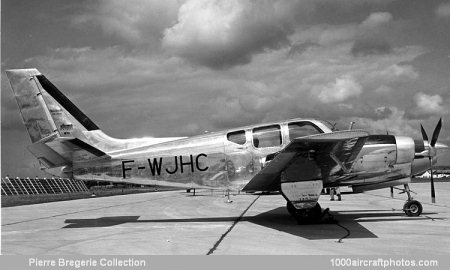12/31/2010. The engine manufacturer Turboméca requested the Sud-Aviation subsidiary SFERMA (Société Française d'Entretien et de Réparation de Matériel Aéronautique, French company for maintenance and repair of aeronautical material), to convert the original Holste M.H.152 into a test bed for their private venture Astazou turboprop engine, a Nord 1100 became the second test bed for the Astazou.
SFERMA modified a Beechcraft Travel Air four-seat cabin monoplane to take two 450 shp Turboméca Astazou IIA turboprop engines in place of the original 180 hp Lycoming piston-engines. Registered F-WJHC the re-engined aircraft flew for the first time on July 12, 1960, and was then known as the Turbo-Travel Air. As shown above, it was subsequently fitted with completely new and larger tail surfaces, based on those of the Beechcraft Baron, and was redesignated SFERMA/Beech PD.146 Marquis.
The Travel Air conversion proved so successful that in January 1961 SFERMA and Beech Aircraft signed an agreement for further development and application of turboprops to Beech aeroplanes. Beech had flown the piston-engined Baron on February 29, 1960, and in 1961 SFERMA assembled two Baron airframes supplied by Beech and modified them to 60A Marquis standard, these where registered F-WJSI and F-WJSJ.
The long engine nacelles and eight fuel tanks in the wing considerably improved airframe strength, and only about 20 lb (9 kg) of stiffening in rear fuselage and wing root were needed to allow for almost doubled power of the Astazou in relation to the piston engines. Following receipt of a CofA, the first production delivery was made to Travelair GmbH of Germany on July 10, 1962. US Type Certification of the Marquis was received on February 11, 1963, by which time deliveries totaled 8 pre-production and 6 production aircraft.
